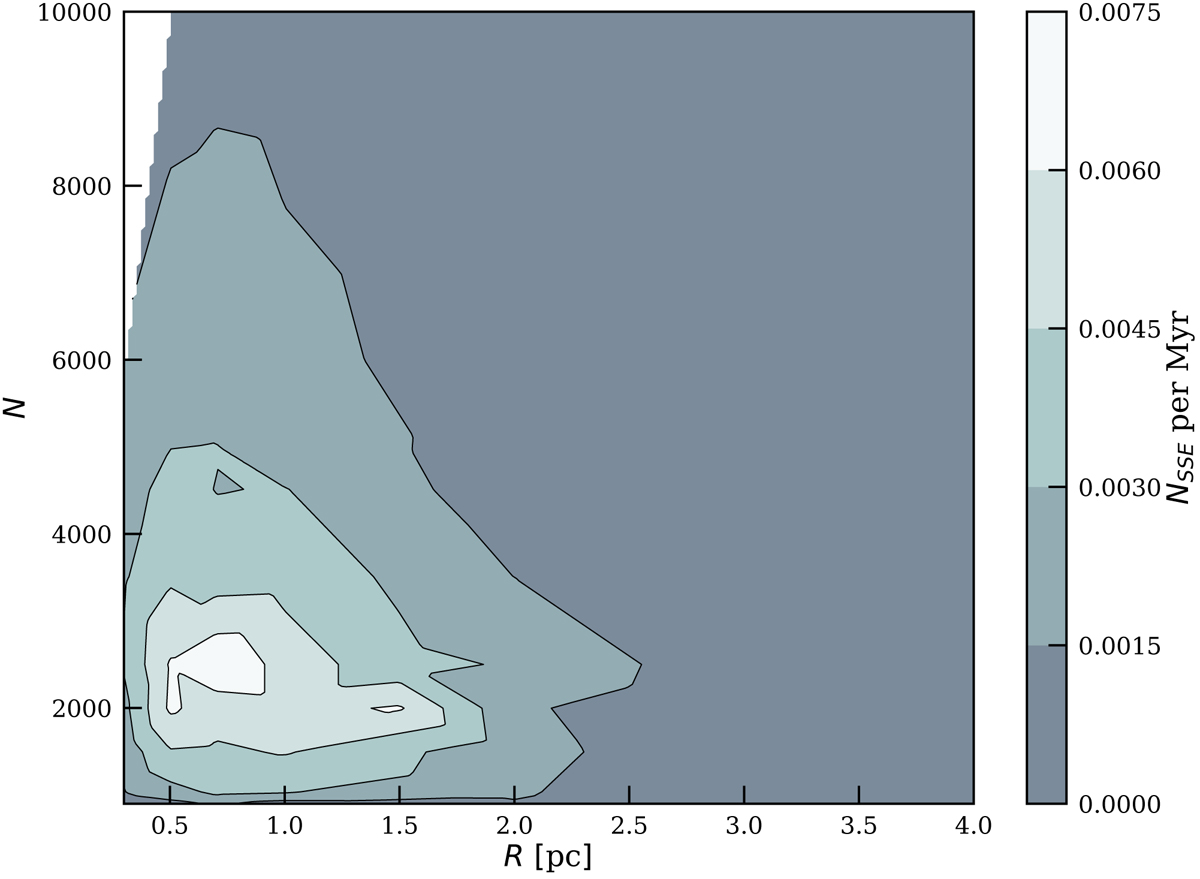Fig. 2.

Expected number of solar-system equivalents formed per million years in the Galaxy for clusters with a virialized (q = 1) Plummer density distribution. The calculations are performed in a grid of ten in mass (between 900 stars and 104 stars) and radius (between 0.1 pc and 4.0 pc). The sum of the phase-space distances for each cluster is convolved with the star-cluster birth function in mass and radius, the probability of hosting a star of at least 20 M⊙ (see Sect. A.5), and assuming a star-formation rate of 1 M⊙ yr−1 (Robitaille & Whitney 2010). For the cluster-birth mass function we use a Schechter function with α = 1, β = −2.3 and mbreak = 2 × 105 M⊙ (Schechter 1976). For the cluster size distribution we adopt a log-normal distribution with rmean = 5 pc and σ = 3 pc (van den Heuvel & Portegies Zwart 2013).
Current usage metrics show cumulative count of Article Views (full-text article views including HTML views, PDF and ePub downloads, according to the available data) and Abstracts Views on Vision4Press platform.
Data correspond to usage on the plateform after 2015. The current usage metrics is available 48-96 hours after online publication and is updated daily on week days.
Initial download of the metrics may take a while.


